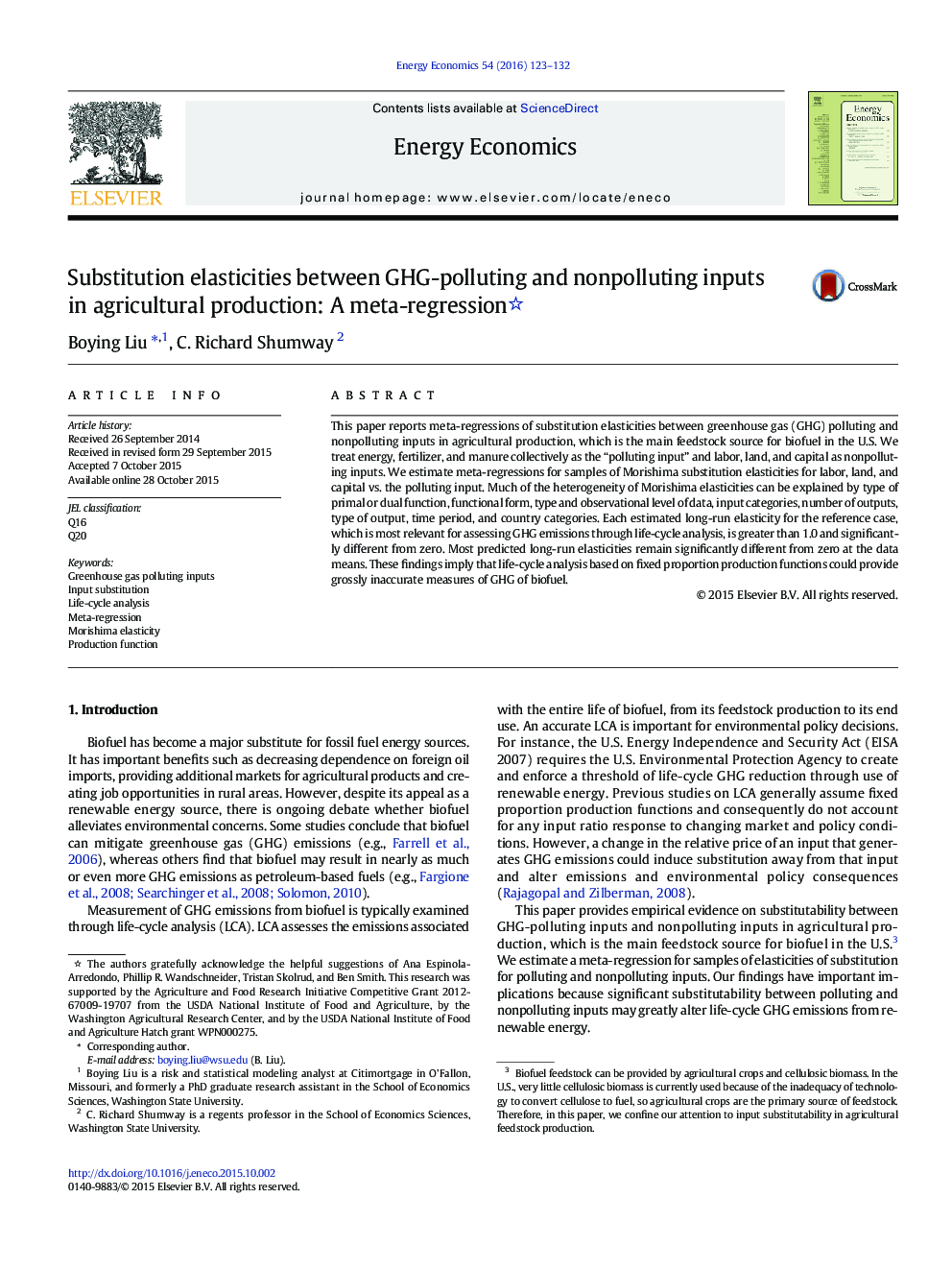| کد مقاله | کد نشریه | سال انتشار | مقاله انگلیسی | نسخه تمام متن |
|---|---|---|---|---|
| 5064064 | 1476710 | 2016 | 10 صفحه PDF | دانلود رایگان |

- This paper reports meta-regressions of substitution elasticities between greenhouse-gas (GHG) polluting and nonpolluting inputs in agricultural production, which is the main feedstock source for biofuel in the U.S.
- We estimate meta-regressions for samples of Morishima substitution elasticities for labor, land, and capital vs. the polluting input based on 65 primary studies.
- We found that each estimated long-run elasticity for the reference case, which is most relevant for assessing GHG emissions through life-cycle analysis, is greater than 1.0 and significantly different from zero. Most predicted long-run elasticities remain significantly different from zero at the data means.
- These findings imply that life-cycle analysis based on fixed proportion production functions could provide grossly inaccurate measures of GHG of biofuel.
This paper reports meta-regressions of substitution elasticities between greenhouse gas (GHG) polluting and nonpolluting inputs in agricultural production, which is the main feedstock source for biofuel in the U.S. We treat energy, fertilizer, and manure collectively as the “polluting input” and labor, land, and capital as nonpolluting inputs. We estimate meta-regressions for samples of Morishima substitution elasticities for labor, land, and capital vs. the polluting input. Much of the heterogeneity of Morishima elasticities can be explained by type of primal or dual function, functional form, type and observational level of data, input categories, number of outputs, type of output, time period, and country categories. Each estimated long-run elasticity for the reference case, which is most relevant for assessing GHG emissions through life-cycle analysis, is greater than 1.0 and significantly different from zero. Most predicted long-run elasticities remain significantly different from zero at the data means. These findings imply that life-cycle analysis based on fixed proportion production functions could provide grossly inaccurate measures of GHG of biofuel.
Journal: Energy Economics - Volume 54, February 2016, Pages 123-132